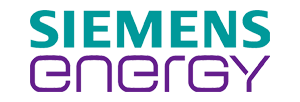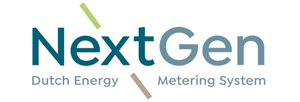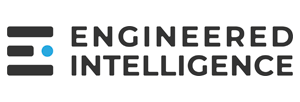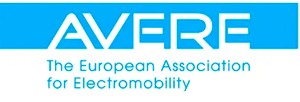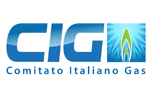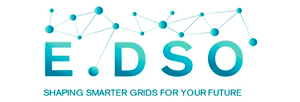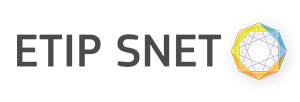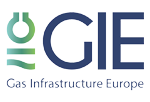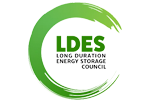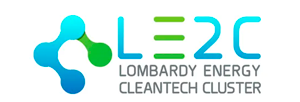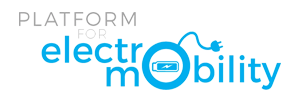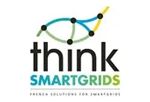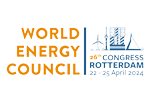AI and the Digital Transformation of the Energy and Mobility Sectors
)
- Event: Enlit Europe 2024
- Date: 22nd October 2024
- Read Time: 15–20 minutes
Quick Summary
Artificial intelligence in energy, edge computing in utilities, and digital transformation in the energy sector are converging to reshape infrastructure, innovation, and customer experience. At Enlit Europe 2024, industry experts explored how AI is becoming the operating core of the energy and mobility sectors—optimising everything from predictive maintenance to customer empowerment.
The panel emphasised AI’s evolution from hype to necessity, with edge computing emerging as a linchpin for utility operations in constrained environments. Generative AI is already transforming grid management, demand forecasting, and field support, while digital culture, not just digital tools, is key to adoption.
Watch the video or read the article below:
Introduction:
AI is reshaping the contours of the energy and mobility sectors—no longer as a futuristic notion but as an active, transformative force. At Enlit Europe 2024, a packed session titled “AI and the Digital Transformation of the Energy and Mobility Sectors” featured a multidisciplinary panel of foremost experts who dissected the nuances of digitalisation across the energy value chain. Led by Lorena Baschwitz as moderator, the session was a deep dive into how artificial intelligence, particularly generative AI, edge computing, and data analytics, is catalysing systemic evolution—from grid infrastructure to consumer engagement.
The dialogue underscored how artificial intelligence in energy is accelerating change and becoming the core driver behind improved agility, sustainability, and customer-centric innovation. Paired with the growing adoption of edge computing in utilities, the sector is rapidly evolving to meet the challenges of decarbonisation and decentralisation.
With panellists including Max Lemke, Head of Unit IoT and Digital Innovation from the European Commission; Margarita Fernandez, Director of Digital Transformation at Iberdrola; Gary Lawrence, Global Power System Lead at Schneider Electric; Kiaas Hommes, Business Developer at TenneT; and Saad Malik, VP at VMware by Broadcom, the conversation mapped the operational, strategic, and regulatory implications of AI. At its core, the discussion punctuated a recurring message—AI is no longer an experiment; it’s an imperative.
A Unified Digital Spine: The Commission’s Vision
Max Lemke opened the dialogue by reframing AI not as a silo treatment for innovation but as the central "digital spine" of Europe's energy transition. Representing the Directorate-General for Communications Networks, Content and Technology (DG CONNECT), Lemke is an innovator, not a regulator. He emphasised that AI’s value lies in its ability to connect the dots—across Distribution System Operators (DSOs), Transmission System Operators (TSOs), renewable infrastructure, and end consumers—optimising operations through predictive diagnostics and intelligent load balancing.
Noting the European Commission’s strides in policy and infrastructure deployment, including the Digitalisation of Energy Action Plan and the twin digital-green transition under the European Green Deal, Lemke flagged that we're reaching maturity: “The data space is there. AI is coming fast, and it’s not just hype—it’s already being deployed, and the impact will soon be ubiquitous.”
Lemke’s standout vision involved an “AI-enabled digital spine” capable of orchestrating grid architecture with foundational generative AI models that blend predictive learning with real-time operations—hallmarks of the ongoing digital transformation in the energy sector.
Key Insight:
AI isn’t just an innovation layer—it’s the infrastructure’s new circulatory system, connecting all actors and assets for seamless, intelligent operations.
From Asset-Centric to Customer-Focused: Iberdrola’s Digital Journey
While utilities have traditionally focused on assets, Margarita Fernandez of Iberdrola called for a customer-forward perspective grounded in transparency and value. “Too often, energy remains an asset-driven sector that forgets the consumer,” she noted. Iberdrola, a global leader in renewable energy, is leveraging artificial intelligence in energy to upgrade not only infrastructure but also customer engagement models.
Fernandez shared real-world applications such as Iberdrola’s dynamic pricing product in Spain that offers real-time discounts based on daily consumption habits, made possible by smart meters and automated usage analytics. In what would’ve once taken monumental resources, AI now delivers consumer-specific intelligence daily and scalably.
On the backend, tools powered by generative AI are enhancing workflows—supporting field workers, improving asset management, and enabling data-driven decision-making as a core aspect of the digital transformation in the energy sector.
Crucially, she flagged that successful AI deployment hinges not just on technology, but cultural and organisational readiness: “Select the initiatives where value is clear, secure top management buy-in, and go deep in those areas.”
Key Insight:
Digitalisation is only transformational when it empowers both the consumer and the workforce—AI must serve value, not hype.
Edge Computing at the Frontlines: Bringing AI Closer to the Grid
Saad Malik of VMware by Broadcom turned the spotlight on a critical but often overlooked frontier: computational proximity. Deploying artificial intelligence in energy isn’t just about algorithms—it’s about localisation. Substations and remote grid assets often lack cloud connectivity or IT personnel, creating a significant implementation gap.
Malik positioned edge computing in utilities as the bridge, enabling operators to harness AI’s full potential in low-connectivity, low-compute environments. “The challenge,” Malik said, “is making AI real in constrained environments—not where the cloud lives, but where volts and amps do.”
Their goal is to disaggregate AI’s traditional model—one that relies on unlimited cloud resources—and adapt it for rugged, real-world environments like substations. By integrating large language models into edge infrastructure, Malik’s approach allows AI to inform fault detection, congestion management, and predictive maintenance directly at the point of impact.
Key Insight:
AI’s real power lies in operational proximity; it must move from cloud-based concept to on-the-ground execution.
The Control Room of the Future: Schneider Electric on Reliability and Speed
Gary Lawrence, representing Schneider Electric, reinforced the two catalysts that make AI critical: speed and carbon reduction. From control rooms to field operations, Lawrence envisaged AI as unlocking both accelerated decision-making and maximised asset use. "Essentially," he noted, "the mission is not just building digital twins—but operationalising them to break down silos from control room to field."
Among the practical deployments discussed was Schneider’s collaboration with platform partner Qmerit in the U.S., where AI helps consumers assess EV-charging readiness simply by taking a photo of their electrical panel. Through image recognition, the system evaluates capacity and recommends upgrades—lifting both technical and psychological adoption barriers.
Lawrence also championed AI’s role in optimising grid infrastructure, particularly in distributed energy resource (DER) integration. Stressing AI’s ability to preemptively reroute power, forecast usage curves, and avoid congestion, Lawrence asked a pressing, rhetorical question: “Why build new infrastructure when you can optimise what you already have?”
Key Insight:
AI doesn’t just enable faster grid innovation—it justifies why we don’t always need more hardware to adapt to a renewable future.
From Back Office to Frontline: Generative AI’s Growing Influence
Across the conversation, generative AI’s potential surfaced repeatedly. Beyond chatbots and copilots, it’s reshaping everything from field support to demand forecasting.
- At Iberdrola, field workers and sales representatives now interact with genAI agents that surface technical documentation and usage patterns on demand.
- In grid planning, generative AI easily parses satellite imagery for rooftop solar potential, a task previously relegated to weeks of inaccurate modelling.
- In maintenance, machine learning automates fault prediction, in harmony with edge-placed sensors providing real-time diagnostics—the embodiment of edge computing in utilities synchronised with AI insights.
Generative AI’s promise lies in adaptability. Whether assisting linemen in substations or identifying relevant use cases inside vast organisations, it aligns with human action—and complements it.
Recalibrating the Consumer Relationship
A strong and recurring theme was the reinvention of the utility-customer relationship. Both Gary Lawrence and Margarita Fernandez acknowledged the growing importance of empowering consumers—not just as customers but as energy participants and decision-makers.
With the proliferation of behind-the-meter resources like residential solar PV, batteries, and EVs, data visibility and control are key. Iberdrola’s smart assistant platform, for example, enables real-time monitoring of energy usage, solar generation, and vehicle charging, turning homes into decentralised energy hubs enabled by artificial intelligence in energy applications.
"Visibility is key," Fernandez noted. “Consumers must stop seeing utilities as black-box entities. Data needs to be immediate, tangible, and translatable into financial value.”
Max Lemke corroborated the point, citing that smarter use and scheduling of DERs should produce immediate savings. “For most consumers, the incentive isn’t innovation—it’s paying less.”
Key Insight:
Forget the tech-heavy pitch—consumers don’t need to know “AI” is under the hood. They need intuitive tools, actionable data, and tangible benefits.
Barriers to Accelerated Adoption
However, the path forward isn’t friction-free. Panelists flagged several barriers slowing the pace of digital transformation in the energy sector:
- Regulatory Inertia: Utility structures are inherently risk-averse, and market rules in the EU are fragmented by country. This affects both scalability and interoperability of AI applications.
- Data Siloing: Despite calls for democratised data, utilities remain hesitant to share what’s often viewed as proprietary competitive assets.
- Skills Gap: As field technology becomes more sophisticated, the human workforce must evolve. Upskilling, changing workflows, and easing interfaces with AI tools remain steep challenges.
- Systems Inflexibility: Many legacy systems weren’t built for AI compatibility. To extract the real value from AI, processes and systems must be redesigned—not simply retrofitted.
Max Lemke emphasised this point succinctly: “Technically, we can share data. Regulators have frameworks. But the real bottleneck is incentives. A shared data economy must be value-driven.”
AI’s Democratising Potential—Or Consolidation Risk?
The question of whether AI levels the playing field or exacerbates existing industry hierarchies was met with careful optimism.
Saad Malik expressed concern: “Big players have more data and more compute. If AI’s potential is monopolised, innovation may stall.” Fernandez respectfully disagreed: “The retail energy market, especially in places like the UK, is already highly competitive. We've seen newcomers become market leaders in under a decade.”
Malik countered that access to market isn’t the same as ability to scale operationally. “We need to ensure small players have access to data and infrastructure, or AI’s promise may remain stratified.”
Ultimately, all agreed that artificial intelligence in energy brings new market dynamics. Whether in forming energy communities, spawning startups around grid services, or enabling new retail products, the value chain is being reshuffled.
Key Insight:
AI can democratise—or centralise—the future of energy depending on policy, data accessibility, and how open incumbents are to collaboration.
AI as Infrastructure Optimiser—not Just Innovator
One of the more striking takeaways emerged during the later part of the panel: AI’s role in infrastructure investment efficiency. As Gary Lawrence put it, “Grids are the largest man-made systems on Earth—it’s time they worked smarter, not harder.”
Investing €100 billion in new infrastructure isn’t always efficient when AI can reconduct existing assets, preemptively optimise switches, or predict outage scenarios with high degrees of precision. Combined with the rapid progress in edge computing in utilities, AI is poised not just to manage infrastructure—but to radically reduce the capital burden of modernising it.
Key Insight:
AI isn’t a side upgrade; it's a force multiplier that enables Europe to scale renewables without always scaling hardware.
Three Years On—What Will AI Have Changed?
As an energising close, the panel predicted what will be embedded into mainstream operations by 2027:
- Max Lemke envisioned a radical shift in the prosumer space: predictive usage models, AI-scheduled consumption, and community energy optimisers will move from pilot to default.
- Gary Lawrence highlighted hyperpersonalised consumer interfaces and AI-driven DER management tools as standard.
- Saad Malik foresees self-optimising substations operating through software-defined infrastructure, radically simplifying utility workflows.
- Margarita Fernandez sees generative AI solving previously unreachable challenges—RO roof analysis, blade inspections, vegetation management—at scale via imagery and adaptive pattern recognition.
Conclusion: Accelerate, Align, and Innovate Together
The Enlit Europe session on AI and digital transformation was a blueprint for what's possible when data, infrastructure, and human intent align. Whether streamlining the grid’s control logic, simplifying asset installation, or reimagining consumer relationships, artificial intelligence in energy isn’t coming—it has already arrived.
But adoption can’t be technocratic. Success hinges on making AI accessible, proving its value to the sceptical, and integrating it into legacy structures without losing pace. European energy may be regulated differently in 27 individual markets, but its digital future must feel cohesive, collaborative, and equitable.
AI may not stitch the single electricity market together—yet. But it’s building the neural links for shared intelligence, tighter coordination, and collective progress.
Session Takeaways
-
AI is central to digital transformation in the energy sector
-
Edge computing makes AI viable in real-world utility settings
-
Generative AI enhances planning, forecasting, and field support
-
Consumer empowerment relies on intuitive, benefit-driven tools
-
Regulatory and cultural alignment is crucial for scaling impact
Final Thought
We won’t be saying "AI is coming" much longer. We’ll be saying "AI has changed everything."
JOIN US IN 2025: BOOK YOUR PASS












